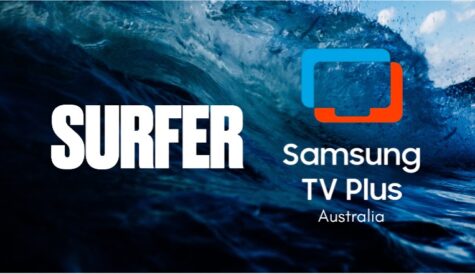
After more than 40 years of operation, DTVE is closing its doors and our website will no longer be updated daily. Thank you for all of your support.
Lifestyle visions – channels targeting the female audience
 International channel providers are increasingly looking to target new launches to the lucrative and relatively underserved female audience, writes Andy Fry.
International channel providers are increasingly looking to target new launches to the lucrative and relatively underserved female audience, writes Andy Fry.
In the early days of pay TV, a lot of emphasis was placed on the ability of sport and movie channels to drive subscriptions. Soon after, kids and factual channels were added as a way of encouraging loyalty and limiting churn.
More recently, however, the emphasis has been on adding lifestyle channels that appeal to a female audience. Look across any market in EMEA and you can find a mix of local and international channels that focus on subjects like food, well-being, fashion, makeovers, home and entertainment.
Among the international channels seeking to make a mark in this space, the pace-setter is TLC International, a Discovery Networks International (DNI) channel which was launched in March 2010 as a companion to TLC in the US.
Redressing the bias
According to DNI executive vice-president and chief content officer Luis Silberwasser, TLC is redressing the male bias of the channel portfolio. “TLC juxtaposes really well with the kind of male-targeted channels Discovery is known for. It tackles the universal themes that many women are interested in.”
The notion of “universal themes” is important – much of TLC’s content is based around US productions such as Cake Boss, Say Yes To The Dress and LA Ink. “The shows travel well because they offer great stories around topics that women relate to. That’s why TLC is rating among the top 10-15 pay TV channels in many territories,”says Silberwasser.
Support for Silberwasser’s claim comes from a market like Poland, where TLC overtook local lifestyle channels including TVN Style and Polsat Café after just five months on air. There’s also been strong growth in Norway – where TLC was the eighth ranking commercial channel a year after its launch.
This pattern also extends to Real Time, DNI’s female-targeted DTT channel in Italy, which has grown rapidly with TLC content. Audience share for Real Time has increased 770% over the past year in its core demographic of women aged 25-49, reaching 1.9% national share and 16 million viewers a month.
Having said all this, Silberwasser is keen not to depict the channel as a carbon copy of the US channel: “The shows travel well but you still need a local flavour to the various channels. In the UK, we’ve acquired shows like Too Fat For 15 and Embarrassing Bodies. We’ve also moved into local production – creating territory-specific versions of shows like Don’t Tell The Bride for Norway and Poland, and Daughters v Mothers, a Norwegian format re-versioned for Russia.”
The shows travel well but you still need a local flavour to the various channels.
Luis Silberwasser, Discovery
Reinforcing the idea that international shows can compete with local content is the experience of Chello Media, which relaunched Zone Club as Club TV in Poland during 2010. “We wanted to find the best programme mix for Club, so we researched the views of women in the market,” says Katalin Radóczy, chief programming officer at Chello Central Europe. “We would have been happy to put the emphasis on local production but found that women wanted international shows – as long as they were good quality and interesting. That’s why a lot of Club TV’s schedule is sourced from leading distributors like FME, DRG, All3Media and Passion.”
Aspirational end
That said, Radóczy explains that each territory in her footprint behaves differently: “In Hungary there’s more desire for local content. Our cooking channel Paprika – available across Hungary, Czech, Slovakia and Romania – produces 150 hours of new content a year, which is a lot by regional standards. Usually the local content is more practical, hands-on, and goes into daytime. Our acquisitions, such as Jamie Oliver and Gordon Ramsay, play later on.”
Radóczy is making an important point here – which is that there is a distinction between practical and aspirational lifestyle content. “To give another example,” she says: “Our homes channel Spektrum Home – recently rebranded from Deco to take advantage of the high profile enjoyed by factual channel Spektrum – is very practical and rooted in the experience of the region. It would feel wrong in these countries to make a homes channel that is too aspirational.”
As a rule of thumb, the US entrants into the EMEA market are at the aspirational end of the range. Scripps Network Interactive’s (SNI) Food Network is a recent arrival in EMEA which underlines this point. “A lot of food channels are dump and stir whereas we are really about tent-pole entertainment events with a lot of money on the screen,” says Bob Baskerville, general manager of Scripps International. “An example is Chopped, one of our top food reality series.”
Like TLC, Food Network is largely based around US content but Baskerville acknowledges the need for some local flavour. “We have an original commission in the UK, Andy Bates’ Street Food,” says Baskerville, “and see scope for more originals that will resonate with audience in different parts of the globe. I could see new versions of Chopped working in different markets as we grow. And the right third-party acquisitions can also work if they fit Food Network’s channel profile.”
Channel profile is a key consideration, because Scripps doesn’t see itself as being in the same space as other lifestyle channels such as DNI’s TLC or ComCast heavyhitters like E! and Style. “You only have to look at our US portfolio to see the difference. We don’t do the racier end of lifestyle.” In other words, you won’t find Jersey Shore, The Kardashians or Real Housewives on a Scripps channel.[icitspot id=”16183″ template=”box-story”]
FLN (Fine Living Network) was replaced in the US recently by Cooking Channel. It is available in EMEA as a single feed. But there’s more to come, says Baskerville. “We feel we are still right at the start of the process with FLN. But we will be talking more about our plans for FLN down at MIPCOM.”
In EMEA, the rollout of Food and FLN are now housed within a joint venture with Chellomedia – which potentially unlocks further distribution opportunities via Chello-owned UPC platforms.
Food and FLN are good examples that while lifestyle can be racy or traditional, practical or aspirational, there’s also a decision to be made around the overarching idea of lifestyle and the various verticals it covers.
Another good illustration is BBC Worldwide’s BBC Lifestyle, which is available in Poland (Vectra, UPC Polska, ‘n’ and others), Nordic (Canal Digital, Com Hem, YouSee and others), Africa (MultiChoice) and the Middle East (Orbit Showtime Network).
A few years back, BBC Lifestyle replaced another channel BBC, Food, and now includes makeover and personal development shows in the mix. But as Jon Farrar, vice-president, programming, EMEA, BBC Worldwide channels, explains, food remains the crucial element of the proposition. “We have Grand Designs, Fantasy Homes By The Seas and Extreme Makeover in the schedule – and recently added some Gok Kwan titles. But food is still the spine of our schedule, and it works brilliantly in markets like South Africa and Poland.”
This editorial emphasis isn’t surprising. Food programming clearly travels. Add to this the quality of the BBC’s food programming and the channel skew is a no-brainer: “We have most of the world’s best chefs in our line up,” says Farrar, “sourced either from our own portfolio or other UK distributors. Masterchef, Jamie Oliver and Gordon Ramsay are globally recognised brands.”
Strategically, though, BBC Lifestyle raises an interesting question about channel branding in the lifestyle space. Does it make sense to be very clear about the lifestyle vertical (for example, Food Network and Spektrum Home). Or is it better to be broad-based? This is a debate about the benefit of clear branding versus the advantage of being able to adapt the schedule according to (a) changing tastes among audiences and (b) variations in taste between territories. It’s interesting to note, for example, that both TLC and BBC Lifestyle covered Prince William’s marriage to Kate Middleton and see weddings as a potential growth area in their line-up.
In terms of what lifestyle does for BBC Worldwide, Farrar echoes the Discovery/TLC story when he says: “We introduced a new line-up of channels in 2008 which includes female-focused BBC Lifestyle and male-oriented BBC Knowledge. That really appeals to platform operators and covers the bases in terms of the advertising proposition.”
Focus on verticals
The issue of whether to focus on verticals or not depends to some extent on the company behind the channel. Chellomedia, for example, is targeting women via international and local channels, broad-based and narrowly-targeted. One service it is keen to flag up right now is Horse & Country TV, which offers a mix of programming to fans of equestrian sports and country lifestyle. Available on Sky in the UK, H&C TV’s core audience is ABC1 women aged 35 to 54, says H&C TV’s chairman, Heather Killen: “Equestrian sport is possibly the only sports sector with a distinct female bias, and represents a unique opportunity to reach upscale women with an active lifestyle proposition. Our audience loves shows that give them an insight into their heroes’ lifestyles.”
The expansion of the lifestyle space doesn’t show any sign of abating. Aside from the channels already mentioned, recent developments include the launch of AMC Networks-owned WEtv in Korea. With sister channel Sundance already well-established in Europe, it shouldn’t be long before WEtv (home of shows including Bridezillas and Amazing Cakes) plants its flag in Europe. That certainly seems to be the intention of Harold Gronenthal, senior vice-president and general manager, AMC/Sundance Channel Global who says: “With our services now available across Europe and Asia, we look forward to continuing our momentum globally to serve audiences as well as our distribution, production and marketing partners.”
More significant perhaps is A+E Networks’ intention with regard to Lifetime, the female-facing US cable network it acquired in 2009. Currently, A+E is not commenting on plans for rollout of the channel, which suggests three possibilities.
First, the company does not want to disrupt the revenues that it is making from programme distribution (see also sidebar). Second, it is trying to weigh up which territories actually need another lifestyle channel. Or third, A+E wants to make the same bold but achievable launch announcement that Discovery made when launching TLC. To do this, A+E would need to line up deals with carriage operators in advance, in some cases ditching existing channel concepts to make space for Lifetime.
Whatever A+E’s rationale for holding back, there’s an inevitably about it launching Lifetime at some point, given the male-bias of its existing channel line-up. The question will be whether Lifetime International uses A&E US lifestyle content to boost its TV schedule.
It’s also worth keeping a watching brief on Comcast/NBC Universal after their merger. Comcast’s E! and Style are already active in the international space. But NBC Universal’s Bravo isn’t. Now that Kevin MacLellan is overseeing the entire international channel operation following a ComCast-driven exec shake-up, it will be interesting to see if that changes.
The segmentation of the female-facing lifestyle market doesn’t end with non-scripted content. Not to be overlooked is the role of scripted content in the lifestyle mix. TLC and Club TV have both made tentative moves in this direction (NBC’s Parenthood is on TLC in Poland). But the power play here is Fox International Channels’ (FIC) Fox Life.
Originally conceived and developed in-house by FIC in Italy, this female-facing channel currently reaches more than 38 million homes in 80 territories with a mix of comedies, drama and scripted first-run series such as Desperate Housewives, Ugly Betty, Grey’s Anatomy, Cougar Town, Mad Men and Ally McBeal. There’s also room for a few non-scripted franchises such as America’s Next Top Model.
If there’s an observation worth making about scripted lifestyle channels it is that market-by-market access to top shows depends to some extent on the value of those shows in programme distribution. In the UK, for example, shows like Ugly Betty tend to be snapped up by terrestrial broadcasters with digital channel portfolios or by pay TV powerhouses like Sky One. For this reason, a lot of FIC’s EMEA distribution tends to be in central and eastern Europe, where the value of rights is lower.
This year, for example, has seen major developments for Fox Life in Russia. In March, FIC signed a deal with VimpelCom which will see Fox Life HD made available on its Beeline Home Digital TV platform. FIC Europe president Jesús Perezagua called the deal “a key step in a market full of potential, where it’s possible to innovate and spread our business development.” Three months later FIC also secured carriage on leading Russian pay TV platform NTV Plus for Fox Life SD, Fox Crime and Nat Geo Wild HD (joining National Geographic Channel and NG Wild which have been on NTV Plus since 2006).
Latin American impact
No analysis of lifestyle would be complete without reference to the Latin American impact on the market. While Anglo-American content is the dominant force, Latin American output is a potent rival in Iberia (where it shares the same language and cultural mindset) and central and eastern Europe.
Here, ther are two main international players. First, FIC, which markets Latin American channel Utilisima to EMEA. Based around a pipeline of 1,200 hours of original content a year (created by a FIC-owned production house in Argentina), Utilisima covers everything from cooking and personal style to decorating and DIY. Available to 34 million homes, it built its brand in the Latin American and US Hispanic markets, then made its first foray into Europe as a digital-terrestrial block in Spain.
This year, FIC used its prominent position in central and eastern Europe to engineer the launch of Utilisima in eight Balkan countries. In addition to the Latin American content, it will produce new series out of Bulgaria, according to Krasimir Nikolov, managing director of FIC in the region. “Utilisima will bring many of the international shows that have contributed to its success, but will also be tailored for the Bulgaria.”
The other major player is Televisa Networks, which runs a portfolio of channels in Europe based around content from Mexican media giant Televisa. The current pay TV offer, available in Europe, Australia and Africa, is “seven channels, of which six are Spanish-language – Canal de las Estrellas, TLnovelas, Ritmoson, Telehit, Clasico TV and De Pelicula, and one channel in Portuguese called TLN,” says Valentina Lauria Romero, director of sales, Europe for Televisa Networks.
While flagship channel Canal de las Estrellas is the best-known of the bunch, TLnovelas is the most female-focused of the Spanish channels. However it is not, for the most part, sold as a stand-alone network. “In Spain, the channels are on the basic tier,” says Lauria Romero. “Outside Spain, they are sold as a package to premium subscribers. This is attractive since it includes channels for the entire family.”
The situation is different with TLN, which airs hit soap operas like Rubí, Muchachitas, Esmeralda and Mundo de Fieras. According to Lauria Romero, TLN is a top priority for international expansion, “as it opens whole new range of possibilities by reaching the Portuguese speaking audiences in markets like Angola, Brazil, Portugal and Mozambique”.
If there’s one final dynamic worth discussing, it’s whether female audiences are as demanding as male audiences when it comes to online and mobile support for their favourite TV brands. BBC Worldwide’s Farrar says there’s evidence that information-based content like recipes (for example as mobile apps) attracts female users (something that has also been evident at Chello’s Spanish channel Cocina). Over at TLC, Silberwasser says: “It’s early days. But we did a lot of social media activity around the Royal Wedding – and usage in Russia was huge. That suggests big events can drive online usage – particularly in the younger female demo.”


